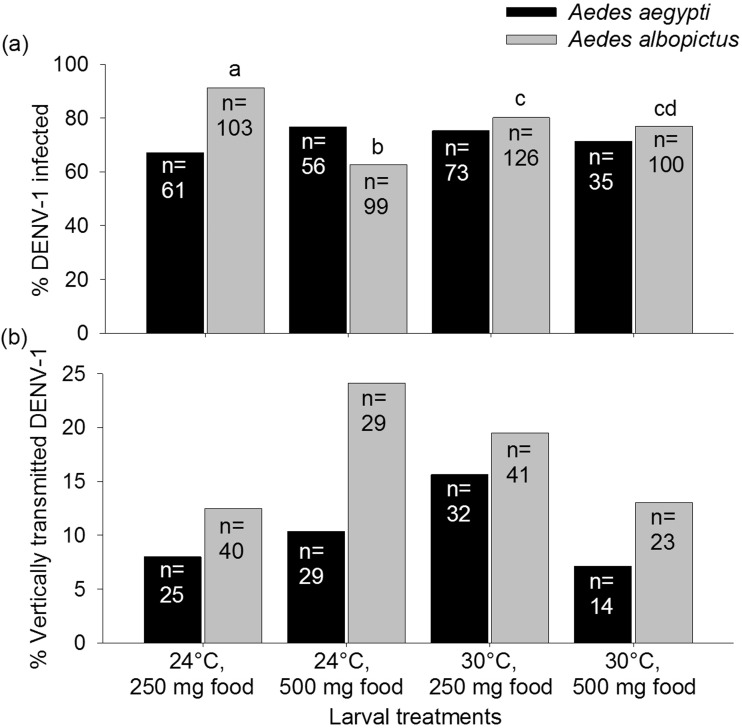Fig. 2.
Percentages of Aedes aegypti and Aedes albopictus mosquitoes infected with DENV-1 (a) and vertically transmitted DENV-1 to progeny (b) for larval treatments, which varied temperature and food levels. Numbers (n) associated with treatment groups indicate the total number of females provided with a DENV-1 bloodmeal (a) and total number of DENV-1-infected mothers (b) for each treatment. Percentages followed by different lowercase letters show significant differences determined by maximum likelihood follow-up contrasts (temperature – Ae. albopictus: χ2 = 0.04, df = 1, P = 0.83, Ae. aegypti: χ2 = 0.06, df = 1, P = 0.81; food – Ae. albopictus: χ2 = 0.10, df = 1, P = 0.76, Ae. aegypti: χ2 = 0.16, df = 1, P = 0.69; food × temperature interaction – Ae. albopictus: χ2 = 2.01, df = 1, P = 0.16, Ae. aegypti: χ2 = 0.61, df = 1, P = 0.44). Post hoc comparisons used the least significant difference in mean ranks.

